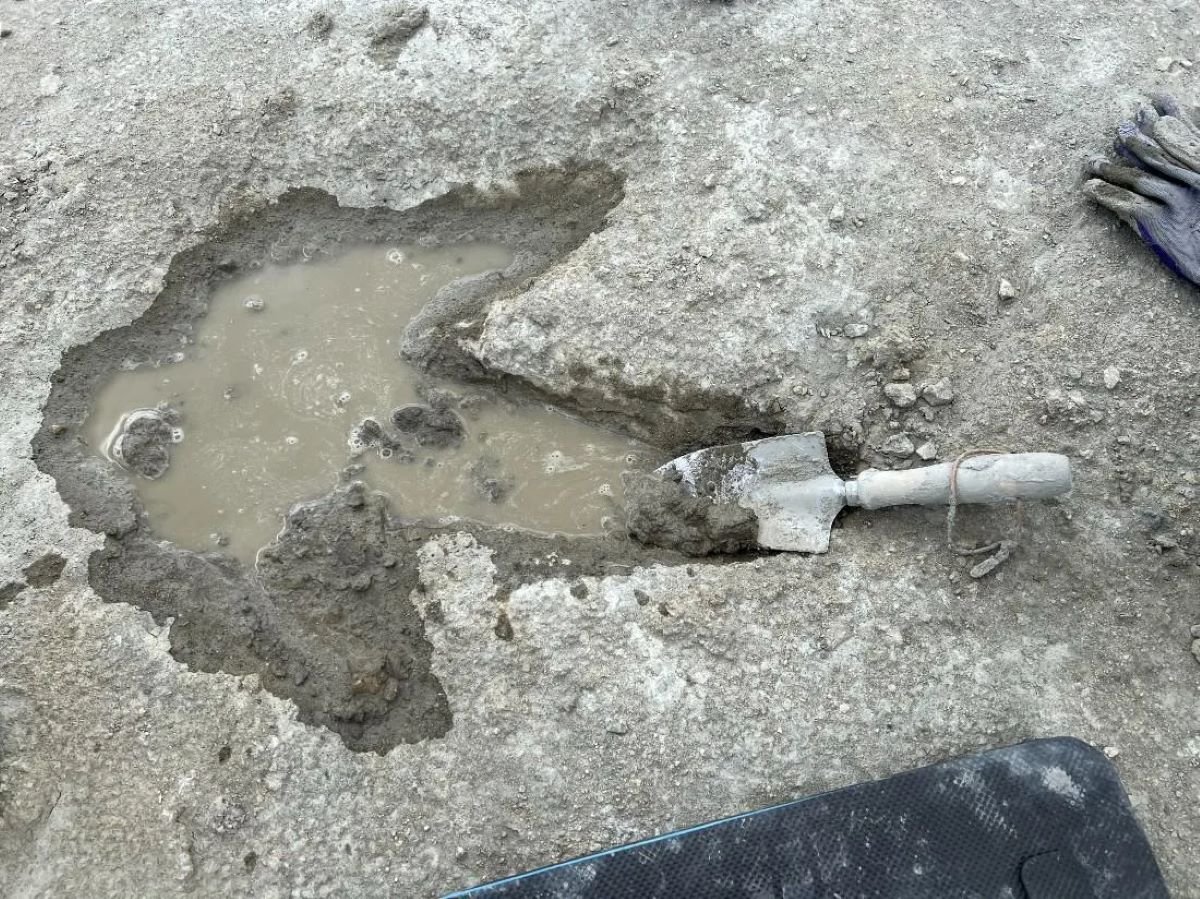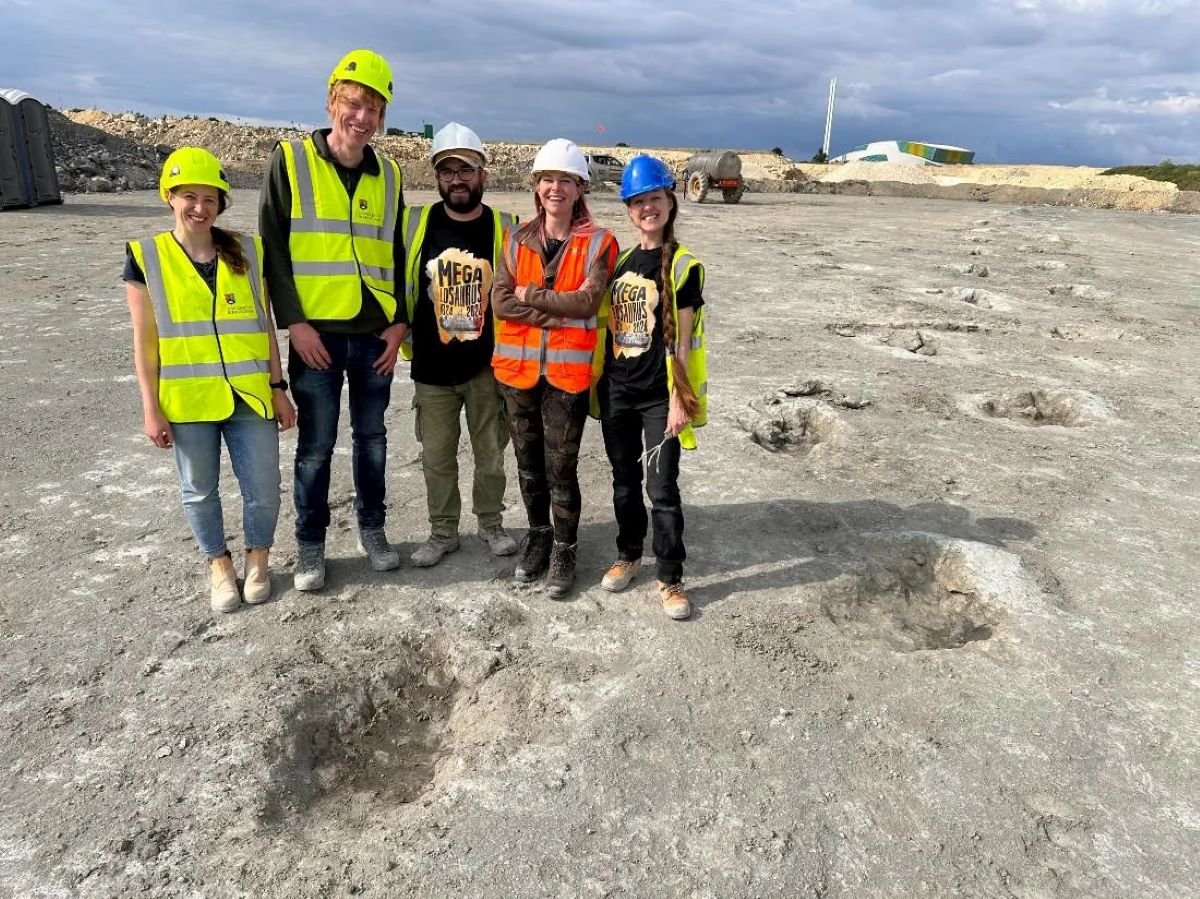In an extraordinary paleontological finding, researchers have uncovered a series of massive dinosaur trackways dating back to the Middle Jurassic Period, approximately 166 million years ago.
Dubbed a 'dinosaur highway,' the site features footprints from both herbivorous dinosaurs, likely Cetiosaurus and the fearsome carnivore Megalosaurus.
The discovery was made at Dewars Farm Quarry in Oxfordshire, England, and includes over 200 footprints spread across five extensive trackways, the longest of which stretches more than 150 meters.

Why This Matters
This discovery sheds light on a little-known period in Earth's history, revealing unprecedented details about dinosaur behavior and the tropical environment they inhabited.
"Most of what we know about dinosaurs comes from the fossil record," Richard Butler, professor of palaeobiology at the University of Birmingham and one of the researchers who carried out the dig, told Newsweek.
"But a skeleton is a record of the animal once it's died. Footprints are quite different in that they are snapshots into the life of an animal. So when you walk on this surface in Oxford, you're walking on the same ground that dinosaurs walked on 166 million years ago, so you can tell things about how the animal actually moved."
The overlapping tracks of herbivores and carnivores have sparked questions about potential interactions between these species.
The site's significance is amplified by the use of advanced techniques such as 3D modeling and drone photography, which ensure detailed documentation for future research.

What to Know
Gary Johnson, a quarry worker, first noticed unusual bumps on the quarry floor, prompting the involvement of experts from the Universities of Oxford and Birmingham. Over a week in June 2024, a team of over 100 scientists and volunteers uncovered the tracks.
Four of the trackways were attributed to sauropods, like the 18-meter-long Cetiosaurus, while one belonged to the predatory Megalosaurus, recognized for its three-toed footprints, which would have been around 9 meters in length.
The footprints provide an "extraordinary window" into the movements and environment of dinosaurs, professor Kirsty Edgar of the University of Birmingham said in a statement.
They complement earlier findings from 1997 in the same area, which lacked today's photographic and modeling capabilities.
Around 20,000 images were taken during the dig, enabling researchers to analyze the footprints in minute detail. These data will be instrumental for both ongoing studies and educational purposes.
What People Are Saying
Emma Nicholls, Vertebrate Palaeontologist at Oxford University Museum of Natural History (OMNH), said in a statement: "Scientists have known about and been studying Megalosaurus for longer than any other dinosaur on Earth, and yet these recent discoveries prove there is still new evidence of these animals out there, waiting to be found."
Duncan Murdock, also of OMNH, added, "The preservation is so detailed that we can see how the mud was deformed as the dinosaur's feet squelched in and out. Along with other fossils like burrows, shells and plants, we can bring to life the muddy lagoon environment the dinosaurs walked through."

What Happens Next
The discovery will take center stage in the upcoming Breaking Ground exhibition at OMNH. Visitors can explore video footage and photographs from the dig, view fossils from the first-ever description of Megalosaurus, and learn about cutting-edge techniques used in paleontology.
Meanwhile, scientists will continue to analyze the vast dataset collected, aiming to unlock further secrets about dinosaur locomotion and behavior.
Butler said the team has many questions they'd like to answer, including what the environment was like at the time, how fast the dinosaurs were moving through it and how these latest findings match up with the earlier discoveries made nearby.
Do you have a tip on a science story that Newsweek should be covering? Do you have a question about dinosaurs? Let us know via science@newsweek.com.



















:quality(85):upscale()/2024/04/24/878/n/3019466/36c5693c662965c5d1ce91.72473705_.jpg)
 English (US) ·
English (US) ·